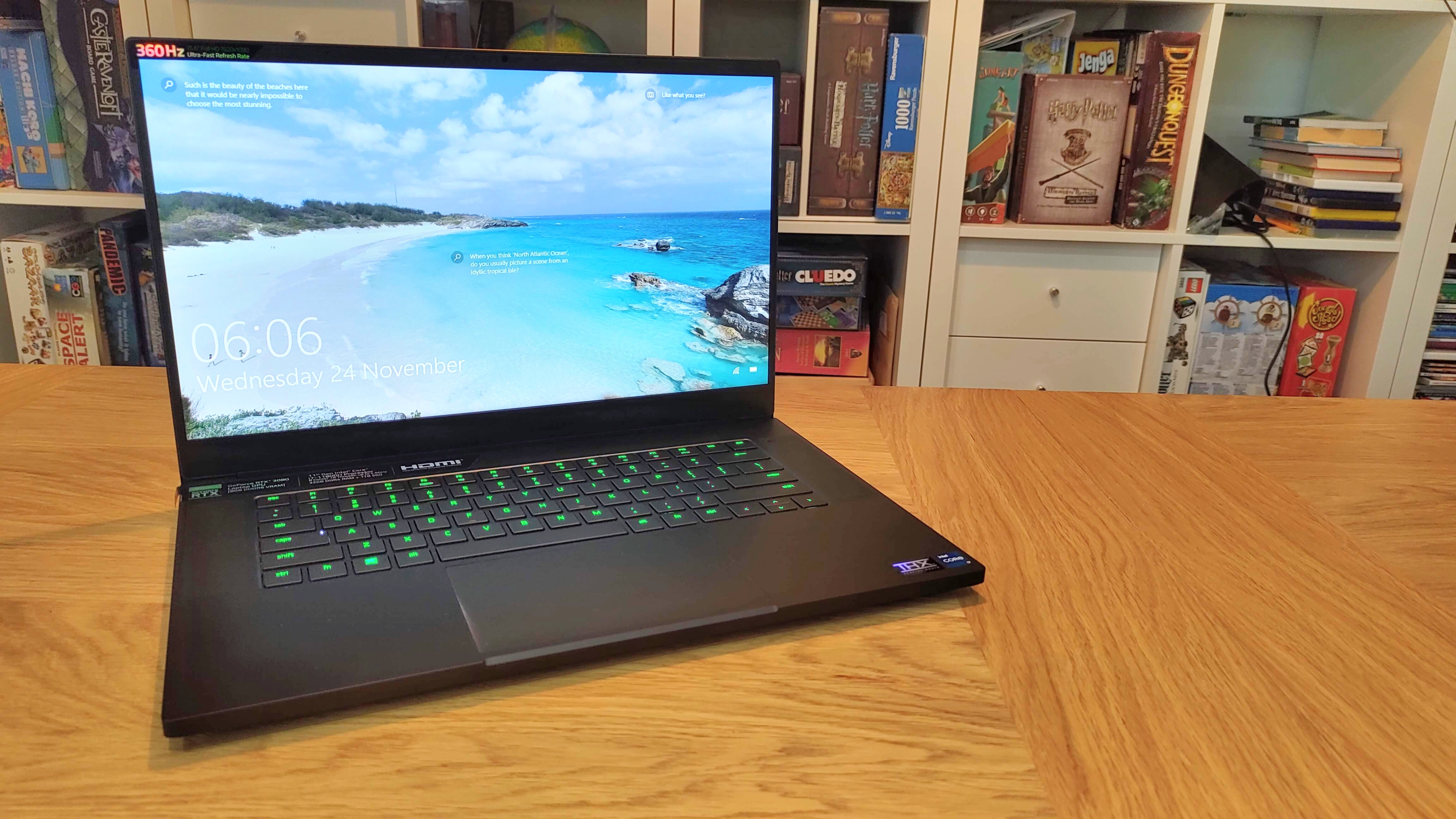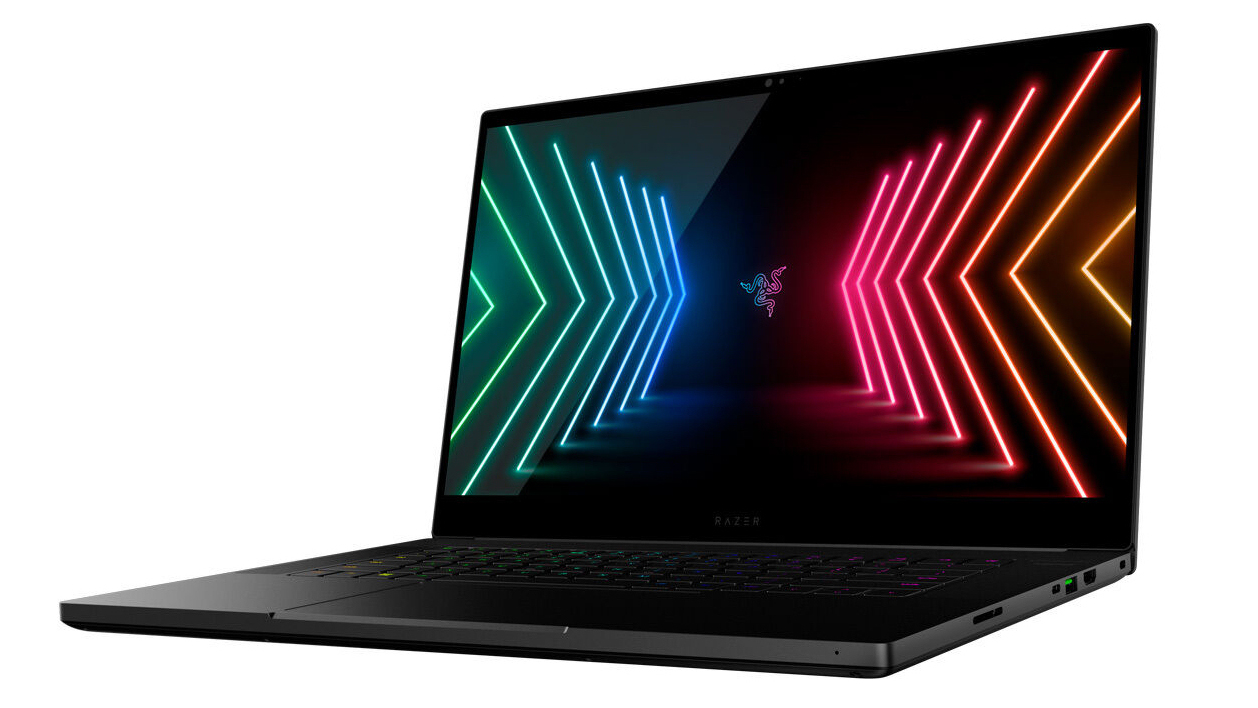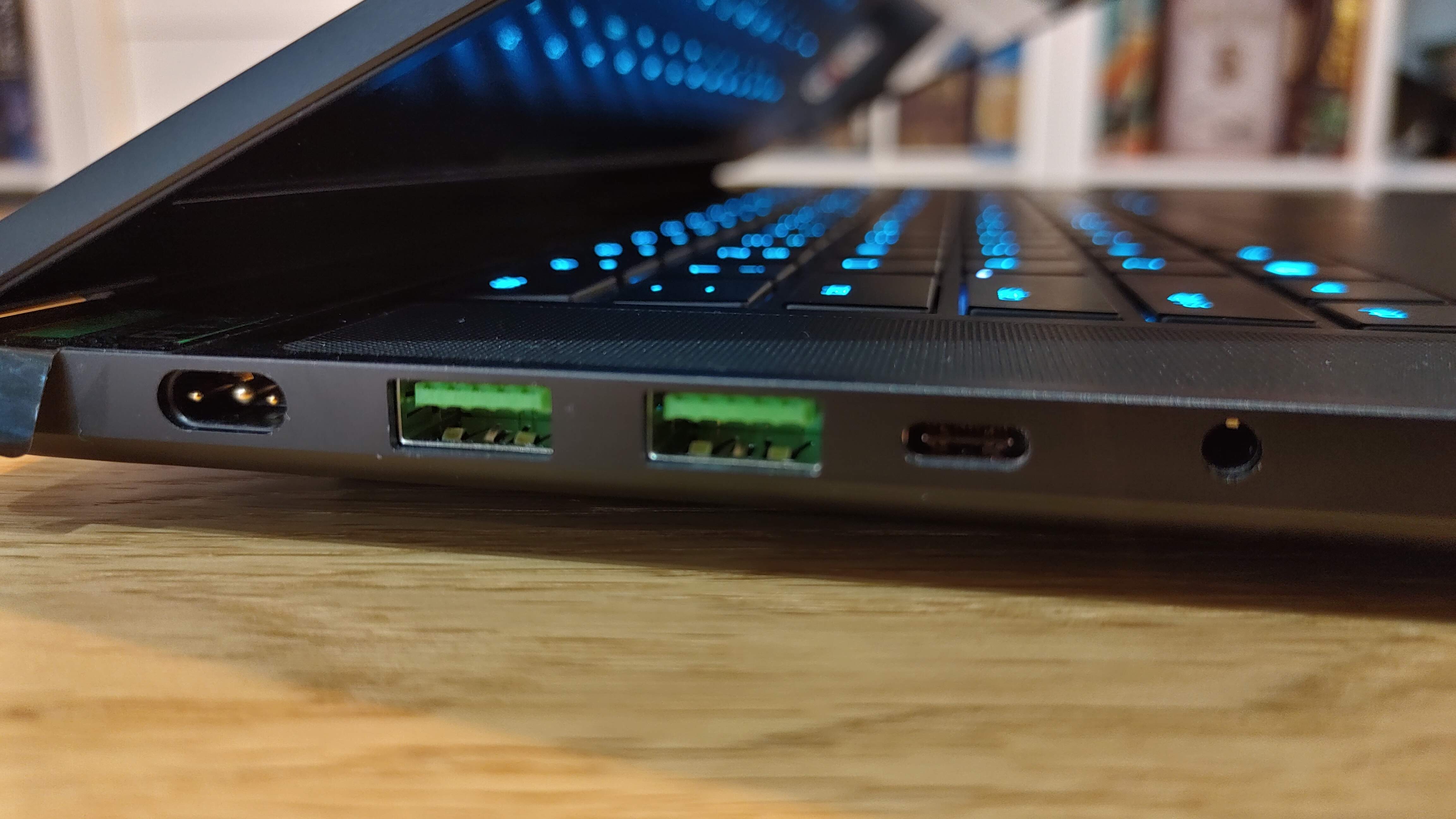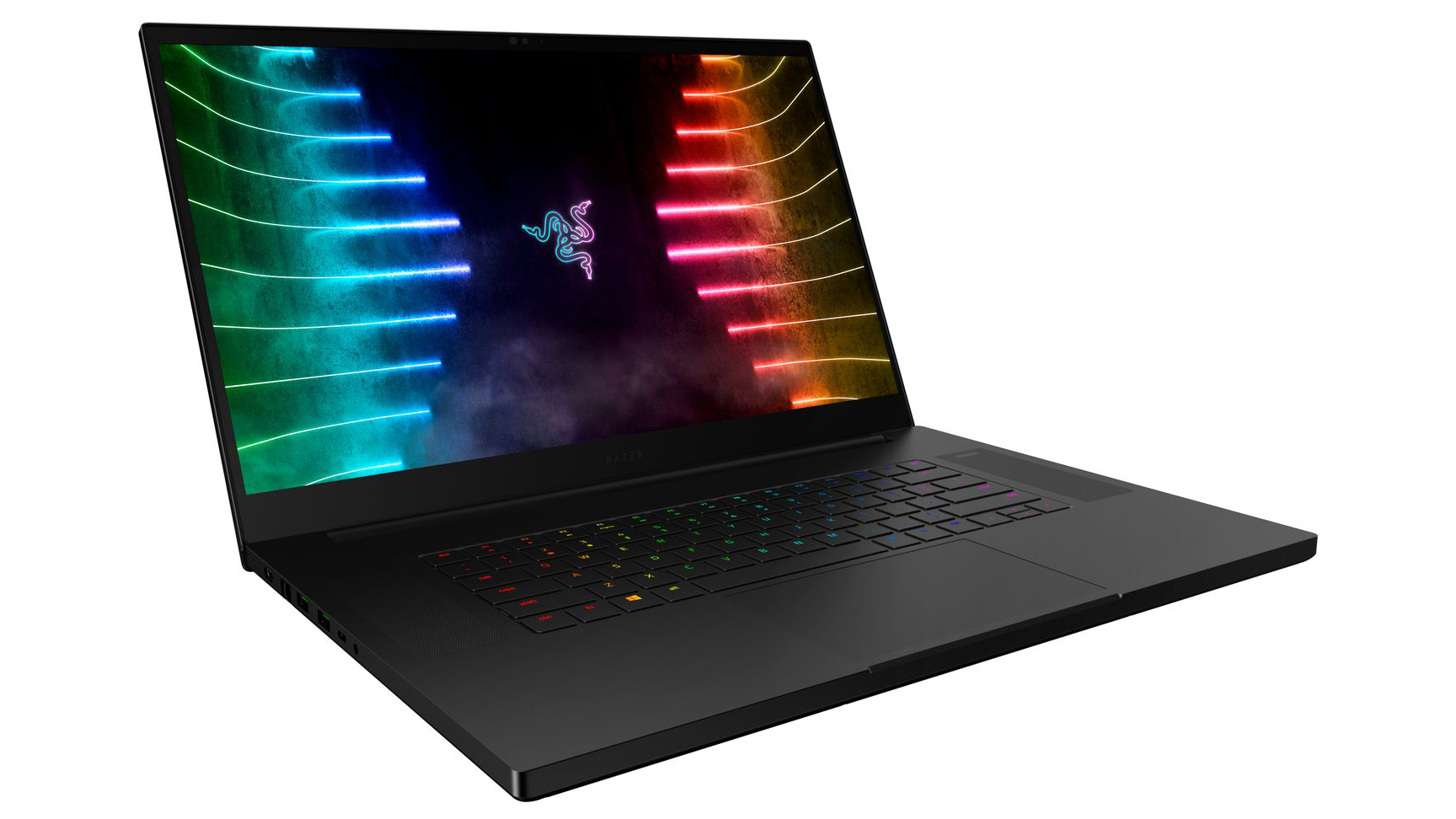Razer Blade 15 Advanced review (2021): cuts through tough games like butter
Money no object? The Razer Blade 15 Advanced is a super-premium laptop which pushes hard and looks great doing it


The Razer Blade 15 is really expensive and worth every penny. Its screen is a marvel, its components are top-of-the-line, its chassis is tough and beautiful, and its performance is without compromise. Buy this and you likely won't need another laptop in two years' time - which makes it something of a bargain, right?
-
+
The 3080 can't be beat
-
+
Stiff, tough chassis
-
+
Gets hot - but the cooling copes
-
+
Super-slick screen
-
+
Speedy storage and RAM
-
-
Outrageously expensive
-
-
Not quite desktop equivalent
Why you can trust T3
Razer Blade 15 Advanced - key specs

Weight: 4.4 pounds (2.02kg)
Dimensions: W x D x H = 0.67 x 9.25 x 13.98 inches (1.6 cm x 23.5 cm x 35.5 cm)
CPU: 2.3GHz Intel Core i7-11800H (octa-core, 24MB cache, up to 4.6GHz)
Graphics: Nvidia GeForce RTX 3080 Max-Q (8GB GDDR6 VRAM); Intel UHD Graphics
RAM: 32GB DDR4)
Screen: 15.6-inch, Full HD (1,920x1,080) IPS, (360Hz refresh rate)
Storage: 1TB M.2 PCIe 4.0 SSD
Camera: Full HD webcam (1080p with Windows Hello)
Ports: 3 x USB 3.2 Gen 2 Type-A, 2x Thunderbolt 4 (USB Type-C), 1 x HDMI 2.1, card reader, headset jack
Welcome to T3's Razer Blade 15 Advanced Model review. There are three certainties in life. Death, taxes, and Razer following every hardware generation with a new and ever more powerful laptop. And although we still love the previous edition, which was among the first on the market to squeeze in a 30-series card, the time has come to see if Razer can still keep on keeping up. All being well, this newest edition will kick Razer up the rankings in our list of the best gaming laptops - and maybe it'll transform your computing life.
Perhaps, at least at the moment, there's a fourth life certainty: things are hard to get. We had some definite around-the-houses chasing to do before we could get our hands on one of these - let's blame the chip shortage and shipping issues, so as not to remind ourselves of any of the bleak specifics - and you're probably not going to find it too easy to put your hands on one, either: Razer's generally premium pricing, mixed with components being rare, mixed with the fact that the specs of this particular laptop sit at the monster end of mobile hardware, make for a serious investment that not everyone can match. It's $3,000 in the States, £2,900 in the UK, and a painful AU$5,699 in the southern hemisphere. You don't have to go quite so nuts, though; the Blade 15 comes in a whole host of configurations, in both Advanced and Base spins; dial back to a Base-spec 3060 model with a 144Hz screen, and you're looking at a more reasonable £1,700 for a machine which will happily rip through just about everything you can throw at it.
You shouldn't do that, though. Buying anything but the most premium, balls-to-the-wall Blade feels wrong. Buying any laptop is almost like investing in the best mattress possible - it's a thing you're probably going to use for hours every day, and picking up the absolute best option is an investment in yourself. It's worth checking our Razer discount codes to see if you can lower the cost.
This is, in theory and in practice, your avenue to truly desktop-baiting performance in a portable package. The design isn't new, but it's still unbelievably classy; the components are soon to be superseded, with radically redesigned 12th-gen Intel CPUs ready to rock the market, but this is a laptop with enough performance to power through long into the future; the screen isn't 4K, but the things it can do with a 360Hz refresh rate at 1920x1080 are astonishing. The Blade 15 Advanced is a solid, satisfying and silky smooth machine.
So let's dive in and see what the 2021 take on the Razer Blade 15 Advanced is all about.

Razer Blade 15 Advanced review: design and build
The Razer Blade 15 Advanced Model is heavy. No getting around it: this is a weighty beast, tipping the scales at just over 2kg (4.4lbs), and while it's slim enough at 16.99 mm x 235 mm x 355 mm (0.67" x 9.25" x 13.98") to not make too big a dent in your bag, it'll certainly make one in your shoulder while you're lugging it around. That said, it's not the densest machine we've ever seen (stand up, the likes of the Asus ROG Zephyrus S GX701 https://www.t3.com/reviews/asus-rog-zephyrus-s-gx701) and the weight it does carry is basically justified: there's an 80 watt-hour lithium polymer battery squashed inside, a large vapour chamber system for cooling, and the case itself is rock-solid CNC-milled anodised aluminium.
The outward design is not a radical departure from Blades past. Indeed it's all-but identical to the 2019 spin, beyond the addition of a couple of extra ports. That's not a bad thing. The Blade 15 design is, and we say this without too much hyperbole, pretty much perfect: it's solid, clean, has just the right level of glitz via Razer's Chroma-lit keyboard, and affords itself plenty of airflow without cutting down on the cool factor. This is a gaming-focused machine that doesn't alien-design its way out of its place on a creative desk. We're sure the layout similarities to the Macbook Pro - the large trackpad, the up-firing speakers either side of the keyboard, even the divot in the front of the base to give your finger purchase to open the lid - are entirely coincidental. Ahem.
Get all the latest news, reviews, deals and buying guides on gorgeous tech, home and active products from the T3 experts
We can't be entirely effusive, though. Where many other manufacturers have moved to a 16:10 screen and chopped out the chin, the Blade 15 still packs something of a whopper bezel below its screen. The keyboard is quiet and has a pleasing pop to it, but its travel is very shallow, and we didn't enjoy using it much. And if we're really nit-picking, the click-weight of the trackpad could be better balanced; at its lower edges it's almost too easy to accidentally actuate, and too stiff at the upper edges.

Razer Blade 15 Advanced review: specs and hardware
The Razer Blade 15 is well-equipped in all of its spins; in the model we have here, it's better-stocked that most other laptops on the market. It's hard to pick out a particular highlight, but let's start from the top.
Our Razer Blade 15 Advanced comes with a 320Hz screen. Frame rates that high are way beyond the limits of the eye and brain, but that's not really the point of a refresh rate increase: this is one of the smoothest panels we've ever seen. We ran it through Blur Busters' entire suite of tests (amusingly, Blur Busters could not actually match the exact refresh rate of the too-fast screen) and ghosting, trails and persistence are kept to an absolute minimum no matter how hard it's pushed. It is frankly brilliant, at least in its own limited capacity; topping out at 1920x1080 means the overall resolution is distinctly last-gen, but at least that reduces the demand on its graphics package.
Geekbench 5 benchmark scores

CPU single core: 1568
Multi core: 6524
Compute: 116101
Speaking of which, this boasts basically the best laptop graphics option around in the form of an Nvidia RTX 3080 with 8GB GDDR6 VRAM. As we'll see a little later in the review, this is outrageously fast and realistically complete overkill for the screen provided - but what is a potentially future-proof laptop without a little wiggle room? FHD is the perfect resolution for a 15-inch panel like this; sic the 2021 Blade 15 on a AAA title in three or four years time and we'd wager that is relative lack of pixels means you'll still be blasting easily past the 60fps mark.
Backing that up is a fully muscled Core i7-11800H processor, which idles at 2.3GHz and can boost up to double that speed; backing /that/ up is a full quotient of slotted 32GB DDR4 RAM, a seriously quick 1TB M.2 PCIe 4.0 SSD (with an open slot for you to add extra storage), and Intel's seemingly ubiquitous Wi-Fi 6E AX210 package. Top-flight stuff.
Expansion potential is also very high, with a pair of Thunderbolt 4-capable USB Type-C ports, one on each side of the unit, along with three (count 'em) full-size Type-A ports, a proper HDMI output, a built-in SD card reader, and a combo audio jack. Whatever you want to connect, you'll have room for it - be that an external mouse, an extra monitor or three, Type-C charging or (thanks to Thunderbolt) even some yet-to-be-invented GPU upgrade.

Razer Blade 15 Advanced review: gaming and performance
Everything we threw at the Razer Blade 15 was met with the digital equivalent of a derisive sneer, as if we were asking far to little of it. Civilization 6, a notorious CPU-pounder, flew through the turns with not so much as a stutter; Shadow of the Tomb Raider, a punishing graphical test even when not ramped up to max, hammered through its ultra settings benchmark at a solid 122fps. Hitman 2 felt smooth and slick; Metro Exodus was an RTX-enhanced joy (as much as the bleak world of Metro Exodus can be a joy). Nothing touched it, basically.
Even when hooked up to external displays - a 1440p monitor, a 4K TV - the Blade 15 stayed comfortably smooth in our test suite. There's certainly more than enough overhead to keep several displays running on the desktop, and more than enough pep to drive a high-res desktop display if that's your aim - though 4K gaming may require a little sacrifice in terms of graphical fidelity, and 8K gaming feels a little out of reach.
3DMark benchmark scores

Time Spy: 8755
Time Spy Extreme: 4488
Fire Strike: 19748
Fire Strike Extreme: 11217
Fire Strike Ultra: 6241
Port Royal: 5803
The battery admittedly doesn't fare too well; you can fall back to the integrated graphics to save a little juice, and we managed a solid five hours and change over a days' work, but this is more a plug-it-in machine than a AAA-on-battery box..
Some users have found it to get quite warm; we agree, but we also found the Blade 15's capacity for cooling to be pretty fantastic. Although the area above the CPU gets understandably warm at times, and there's a very hot exhaust spitting out towards the screen, there's never really a sense that the Blade 15 is struggling to offload the understandable heat thrown out by its components. Fans do ramp up, sometimes pretty significantly depending on your setting selection, and you'll not get through an intensive game without upping the volume a notch or two to block out the noise - but it's a rush rather than a whine, and the speakers themselves can get outrageously loud and remain clear while doing it.
You should be aware, though, that this (like any laptop) isn't a one-for-one replacement for a big-box desktop PC. The numbers are not directly comparable: the 3DMark Port Royale score, which measures real-time raytracing performance, is a few notches below what you'd expect from a big-boy desktop card. Apples-for-apples, though, this offers a massive performance increase over machines sporting even the meatiest 20-series graphics, and holds its own against other 30-series laptops.

Razer Blade 15 Advanced review: verdict
A premium laptop should look premium (check) feel premium (check) and perform its socks off (big check). Razer may not have revised the looks of the Blade, but that's a good thing: it was unfussy and handsome to begin with, with enough physical strength to hopefully ensure it'll last a long time. The work Razer has done on the insides of the Blade 15 Advanced, both to ensure that ridiculous performance and to stop those high-end components from cooking themselves, has been an unqualified success.
This is a fantastic machine if you can afford it. The good news is that even if you can't quite find it in you to shell out three grand on a single laptop, the lower models in the Blade 15 range will still offer entirely acceptable performance for less cash - and everything else on the market with comparable specs will cost you just as much if not more.

T3 magazine's own Gadget Guru is a 25-year veteran of the tech writing wars, and has the scars to prove it. He's written for the UK's biggest technology publications, and knows everything from smart doorbell voltage needs to how to bend Windows to his every whim.
